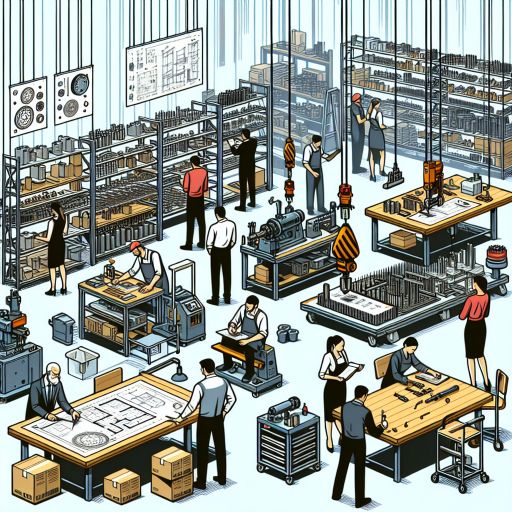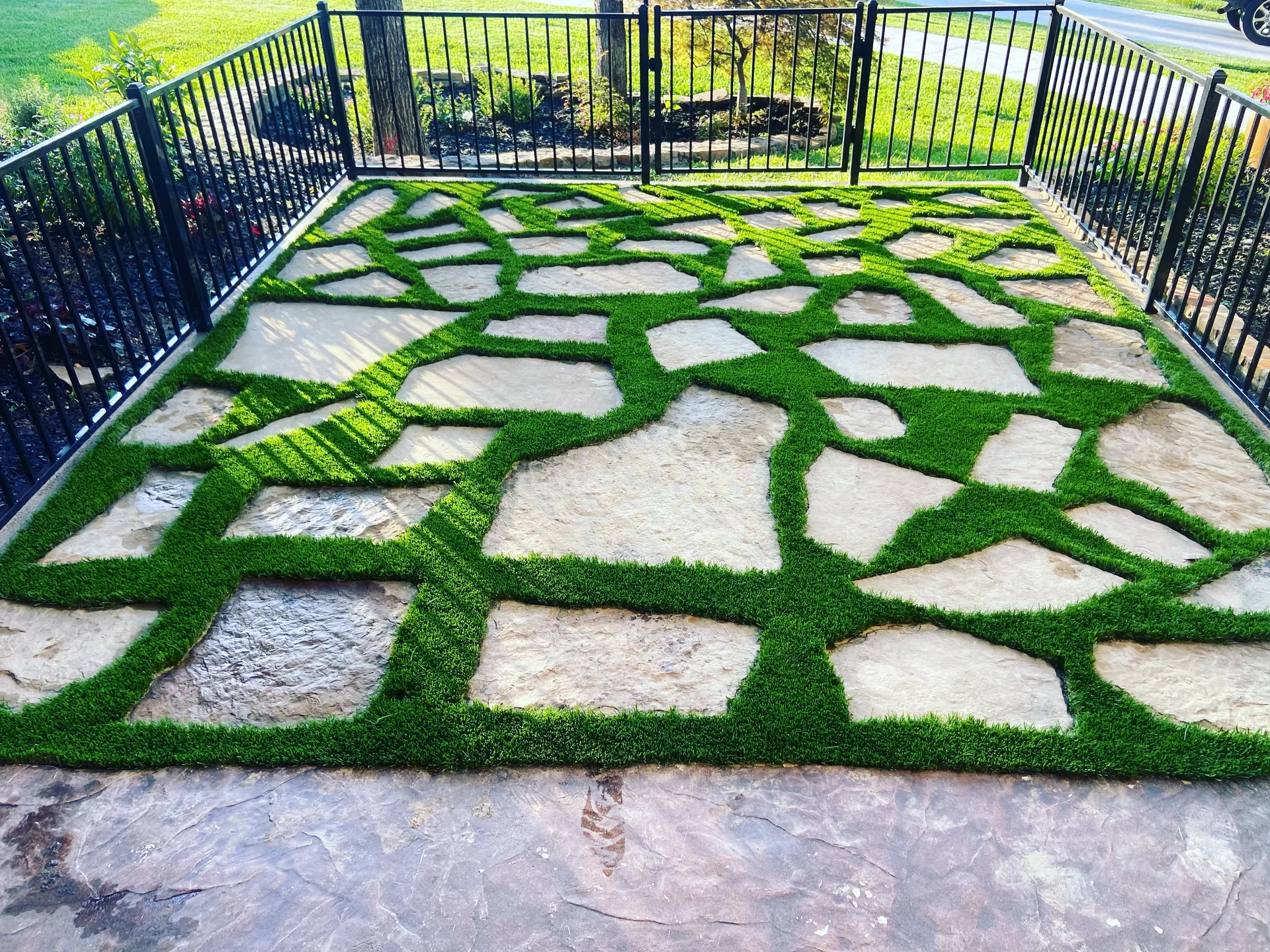
Introduction to Artificial Grass and its Benefits
Artificial grass, once primarily associated with sports fields, has become increasingly popular for residential and commercial landscaping. This growth in use can be attributed to a variety of benefits, which make artificial grass a practical and attractive option.
The Rise of Artificial Grass
Artificial grass has evolved significantly from its inception. Initially designed for sports fields in the 1960s, improvements in materials and manufacturing have led to products that closely mimic the appearance and texture of natural grass. According to the Synthetic Turf Council, over 265 million square feet of artificial grass was installed worldwide in 2018 alone, demonstrating its growing acceptance.
Benefits of Artificial Grass
Several factors contribute to the appeal of artificial grass:
- Low Maintenance: Unlike natural grass, artificial turf does not require mowing, watering, or fertilizing, which saves time and reduces long-term maintenance costs.
- Durability: High-quality artificial turf is designed to withstand heavy use and harsh weather conditions, making it a long-lasting solution for various applications.
- Environmental Impact: Artificial grass conserves water and reduces the need for chemical fertilizers and pesticides, offering a more sustainable landscaping option.
- All-Weather Use: Synthetic grass remains green and usable throughout the year, regardless of weather conditions.
- Versatility: Artificial turf can be used in various settings, including residential lawns, commercial landscapes, playgrounds, and sports fields.
Comparative Analysis of Natural vs. Artificial Grass
| Aspect | Artificial Grass | Natural Grass |
|---|---|---|
| Maintenance | Low | High |
| Water Usage | None | High |
| Lifespan | 15-20 years | Seasonal |
| Installation Cost | High Initial | Low Initial |
Artificial grass offers multiple advantages, but selecting the appropriate product and reliable installation service is crucial for maximizing these benefits. In the following chapters, we will explore essential factors to consider when choosing a turfing company to ensure the highest quality and best value for your investment.
Assessing Company Reputation and Experience
When selecting the right turfing company, examining reputation and experience is crucial. A company’s reputation often reflects its reliability, quality of work, and customer satisfaction, while extensive experience can indicate proven expertise in the field.
Prime Design Turf exemplifies the importance of these factors. As a leading artificial grass installer in the Dallas-Fort Worth area, Prime Design Turf boasts over 20 years of experience. This longevity in the business demonstrates sustained success and a wealth of knowledge in creating diverse turfing solutions, from home gardens to sports fields.
Prime Design Turf’s commitment to personal service and meticulous installation extends beyond the basic expectations, ensuring every project is handled with a combination of creative design and practical functionality. Customers have praised their ability to transform spaces, reflecting positively on the company’s overall reputation.
The following table summarizes key aspects of Prime Design Turf’s reputation and experience:
| Aspect | Details |
|---|---|
| Years in Business | 20+ years |
| Specialties | Home gardens, putting greens, pet-friendly zones, parks, playgrounds, sports fields |
| Customer Feedback | Positive reviews for design creativity, installation precision, and customer service |
Researching a company’s online presence can provide indicative data on its reputation. Websites, reviews, and social media platforms offer insights into customer experiences and overall satisfaction. Prime Design Turf has accumulated positive reviews highlighting their top-quality synthetic turf and the noticeable transformations they have achieved in various projects.
In summary, focusing on a company’s reputation and longevity in the industry, like Prime Design Turf’s established presence and positive client feedback, assures potential customers of reliable services and results. Understanding these elements can significantly aid in choosing the right turfing company that meets specific needs and expectations.
Evaluating Product Quality and Installation Techniques
When choosing the right turfing company, it is essential to evaluate the quality of the products they offer and their installation techniques. Ensuring these elements are up to standard will guarantee a durable and aesthetically pleasing artificial grass installation.
Product Quality
High-quality artificial grass should have certain characteristics that set it apart from lower-end products. Look for the following features:
- Material: Premium artificial grass is typically made from polyethylene, polypropylene, or nylon. Polyethylene is the most popular material due to its softness, durability, and realistic appearance.
- UV Stability: Ensure the grass is UV stabilized. This will prevent the fibers from fading or degrading when exposed to sunlight over time.
- Infill: Quality artificial grass requires appropriate infill materials, such as sand or rubber granules, to maintain the structure and provide cushion.
- Drainage: Look for turf with perforated backing that allows for efficient water drainage. This helps prevent waterlogging and promotes a cleaner surface.
- Dtex and Density: Higher Dtex (weight per 10,000 meters of yarn) and turf density usually indicate a more durable product. Choose grass with higher Dtex and appropriate stitch rates for better wear resistance.
Installation Techniques
The installation process plays a crucial role in the overall performance and longevity of artificial grass. Key aspects to consider include:
- Site Preparation: Proper preparation of the installation site is critical. This involves removing existing vegetation, leveling the ground, and installing a suitable sub-base (e.g., crushed stone) for stability.
- Edging and Seaming: Quality edging materials (e.g., timber or composite) should be used to secure the perimeter. Seaming tape and adhesive should be applied to join turf sections seamlessly.
- Infill Distribution: The infill must be evenly distributed and brushed into the grass fibers to provide support and maintain structure.
- Tools and Machinery: Companies should use specialized tools and machinery to ensure precise and efficient installation, such as mechanical brushes, vibratory plate compactors, and specialized cutting tools.
- Professionalism: Trained and experienced installers should conduct the process. Certifications from organizations such as the Synthetic Turf Council (STC) can indicate adherence to industry best practices.
By thoroughly assessing the product quality and installation techniques of potential turfing companies, you can ensure a successful artificial grass project that meets your expectations for performance and aesthetics.
Cost Considerations and Value for Money
When choosing a turfing company for artificial grass installation, understanding cost considerations and evaluating value for money are critical elements in the decision-making process. This chapter provides a comprehensive examination of the factors that impact the total cost and how to ensure you get the maximum value for your investment.
Understanding the Initial Costs
The initial cost of artificial grass installation can vary significantly depending on several factors:
- Type of Artificial Grass: Different grades and styles of grass come with varying price tags. For instance, premium options designed for high-traffic areas might cost more than basic landscaping grass.
- Area Size: Larger installations naturally incur higher costs due to more materials and labor being required.
- Ground Preparation: The extent of ground preparation needed, such as removing existing grass, leveling the ground, and installing a proper base, can also impact costs.
Labor and Installation Costs
The expertise and efficiency of the installers play a crucial role in the overall cost. Professional installations tend to be more expensive due to the higher skill levels and experience of the workforce. However, skilled installers can ensure the longevity and appearance of the artificial grass, potentially saving money in the long run by avoiding the need for repairs or premature replacements.
Ongoing Maintenance Costs
Although artificial grass requires less maintenance compared to natural grass, there are still some ongoing costs to consider:
- Cleaning: Regular cleaning is required to maintain the appearance and hygiene of the grass, especially in areas with pets.
- Brushing: Periodic brushing helps to keep the grass blades upright and looking fresh.
Some companies may offer maintenance services; it’s beneficial to inquire about these services and their associated costs.
Hidden Costs and Additional Charges
It is essential to be aware of potential hidden costs or additional charges that might not be included in the initial quote. These can include:
- Delivery Fees: Charges for delivering materials to your location.
- Disposal Fees: Costs for removing and disposing of existing turf or soil.
- Accessory Costs: Additional costs for accessories, such as edging, infill materials, and underlays, which might be necessary for certain installations.
Comparing Quotes
When evaluating turfing companies, it is advisable to obtain multiple quotes to compare the overall costs and the scope of services provided. Here are some tips for comparing quotes effectively:
- Ensure Consistency: Make sure each quote includes the same scope of work, materials, and services for a fair comparison.
- Understand Inclusions and Exclusions: Pay attention to what is included in the quote and what might incur additional costs.
- Review Detailed Breakdown: A detailed cost breakdown helps to understand where the money is being spent and ensures transparency.
Evaluating Value for Money
While cost is a significant factor, it is also important to consider the value for money. High-quality artificial grass and professional installation offer long-term benefits that might justify a higher upfront cost. Factors to consider for value include:
- Durability: High-quality materials and skilled installation can increase the lifespan of the artificial grass.
- Aesthetic Appeal: A well-installed lawn looks more realistic and aesthetically pleasing.
- Performance: Quality products perform better in terms of drainage, resistance to wear and tear, and UV stability.
Ultimately, the selection of the right turfing company should be based on finding a balance between cost, quality, and value, ensuring the investment meets your expectations and provides long-term satisfaction.
Understanding Warranty and After-Sales Service
When choosing an artificial grass installer, understanding the warranty and after-sales service is crucial. These factors ensure long-term satisfaction and help protect your investment. This chapter will discuss the key aspects to consider regarding warranties and after-sales services provided by turfing companies.
Types of Warranties
Warranties for artificial grass typically cover two main areas:
- Product Warranty: This covers issues related to the artificial grass material itself, such as UV resistance, durability, and color fading. A reliable product warranty should last between 8 to 15 years, reflecting the expected lifespan of high-quality artificial grass.
- Installation Warranty: This covers problems arising from the installation process, such as seams coming apart or improper drainage. Installation warranties are generally shorter, often ranging from 1 to 3 years.
Key Warranty Elements
When evaluating warranties, pay attention to the following elements:
- Coverage Period: Determine the length of time each warranty is valid. The longer, the better, but ensure to verify the credibility of the company offering extended periods.
- Conditions and Exclusions: Read through the warranty terms to understand what is and isn’t covered. Common exclusions include damage from pets, heavy furniture, or improper usage.
- Claim Process: Investigate how easy it is to file a claim. A complicated or unclear process could signal potential difficulties in receiving service or replacements.
After-Sales Service
After-sales service involves the support provided by the company after the installation is complete. Essential aspects include:
- Maintenance Support: Some companies offer periodic maintenance services or guidance on how to keep your artificial grass in top condition.
- Customer Service Availability: Check if the company has a dedicated customer service team that is easily reachable for addressing any issues or concerns promptly.
- Problem Resolution: Assess the company’s track record in resolving after-sales issues. Reviews and testimonials can provide insight into their responsiveness and effectiveness.
Comparison of Warranty Types and Their Typical Coverage Periods
| Warranty Type | Typical Coverage Period |
|---|---|
| Product Warranty | 8 – 15 years |
| Installation Warranty | 1 – 3 years |
Understanding these warranty types and after-sales services ensures you select a company that stands by its product and workmanship, providing peace of mind and long-term reliability for your artificial grass investment.
Environmental and Safety Factors
When selecting an artificial grass installer, it is essential to consider both environmental and safety factors. Not only is this crucial for the well-being of the planet, but also for the health and safety of the users.
Environmental Considerations
The production and installation of artificial grass can have various environmental impacts. Therefore, choosing a company that utilizes environmentally responsible practices is vital. Several factors should be taken into account:
- Material Composition: Opt for companies that use recyclable and non-toxic materials. High-quality artificial grass often uses polyethylene or polypropylene, which are recyclable.
- Infills: Infills are used to weigh down the grass and keep the blades upright. Eco-friendly infill options include organic materials like cork or walnut shells, and recycled rubber.
- Water Conservation: Unlike natural grass, artificial grass does not require regular watering, thus conserving water. Confirm that the company promotes the water-saving benefits of their products.
- Manufacturing Process: Choose companies that adhere to sustainable manufacturing processes. Some companies use renewable energy sources in production or aim to minimize waste.
Safety Considerations
Safety is another critical factor when selecting an artificial grass installer. It is important to ensure that the product is safe for use, especially in residential areas, schools, and playgrounds. Key safety aspects include:
- Toxicity: Ensure the artificial grass is free from heavy metals such as lead and contains no harmful chemicals. Look for certifications like the EN 71-3 standard, which tests for toxicity levels in synthetic grass.
- Flammability: Verify that the artificial grass is fire-resistant. Products should meet safety standards such as ASTM E108 or NFPA 701.
- Heat Retention: Artificial grass can become hot under direct sunlight. Some companies offer products with cooling technology to reduce surface temperatures.
- Injury Prevention: For areas with high foot traffic or sporting activities, ensure the grass has adequate shock absorption properties to minimize injury risks.
The following table presents examples of sustainable practices and safety standards that a reputable artificial grass company might adhere to:
| Sustainable Practices | Safety Standards |
|---|---|
| Use of recyclable materials | Compliance with EN 71-3 for toxicity |
| Eco-friendly infill options | ASTM E108 fire-resistance certification |
| Sustainable manufacturing processes | Heat reduction technology |
| Promotion of water conservation | Shock absorption properties |
By meticulously evaluating environmental and safety factors, you can ensure that the artificial grass you choose is both eco-friendly and safe for all users. This attention to detail not only contributes to a sustainable future but also provides peace of mind regarding the health and safety of your loved ones or clientele.


